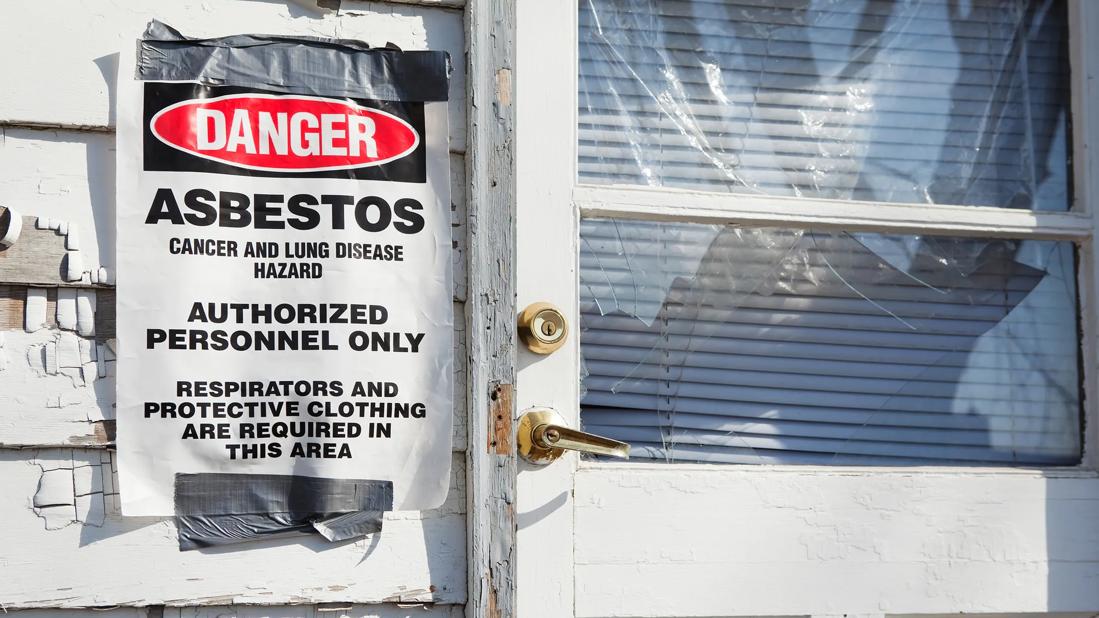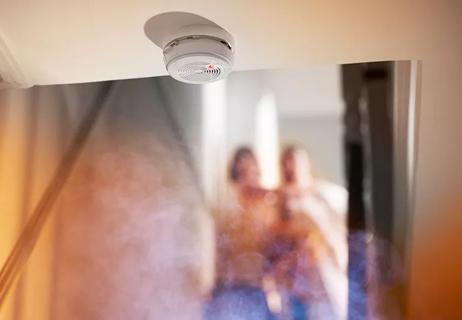There’s no safe way to find, handle, repair or remove asbestos yourself — it’s always a job for a professional

It’s scary to imagine that your home or workplace could be making you sick. But that’s been a very real concern for many over the past several decades, thanks to the widespread use of asbestos in construction projects around the world.
Advertisement
Cleveland Clinic is a non-profit academic medical center. Advertising on our site helps support our mission. We do not endorse non-Cleveland Clinic products or services. Policy
Pulmonologist Humberto Choi, MD, explains what asbestos is, why it’s dangerous and how to prevent exposure.
“Asbestos” is an umbrella term for six different naturally occurring mineral fibers that were once used in construction and manufacturing. These fibers are great for strengthening, insulating and fireproofing materials. But they’re also toxic and carcinogenic, meaning they can cause cancer. As a result, many countries have either banned or heavily regulated the use of asbestos.
“Before it was banned, asbestos could be found in ceilings, floors and paint because it was fireproof,” Dr. Choi explains. “It was sometimes even used in crayons.”
What makes asbestos so dangerous? When it’s damaged, it can be crushed into microscopically thin fibers. They’re so small that you can breathe them in without realizing it — and once they’re in there, they can build up in your respiratory tract and cause health problems, reports Dr. Choi. In some cases, those fibers even migrate to other parts of the body.
“Asbestos-related diseases can take decades to show up. And whether or not you develop a disease depends on how long you were exposed and how intense that exposure was,” he continues.
You’re more likely to encounter and inhale asbestos if you work in certain industries (like mining or firefighting) or live in an old building.
Advertisement
Asbestos can cause a variety of medical conditions, depending on the type, length and extent of your exposure.
“Some of the milder respiratory effects include developing areas of thickened tissue on the lining of your lungs or fluid around your lungs,” Dr. Choi notes. More serious problems include:
Smoking increases your risk for certain asbestos-related diseases, especially lung cancer, Dr. Choi adds.
Your chances of encountering asbestos in your everyday life depend on factors like:
Unless it’s labeled, the only safe and accurate way to find asbestos is to have the item sampled by an accredited asbestos inspector and tested at a laboratory. There are a few reasons why:
Having asbestos in your home or workplace is only an emergency if it’s been damaged or disrupted in some way. So, if you suspect asbestos but the area is in good condition, it’s best to leave it alone. Just check regularly for signs of wear or damage.
But if the asbestos in your home is in bad condition, it’s important to have it addressed quickly. But don’t try to do it yourself.
“Call a trained professional who specializes in asbestos mitigation,” Dr. Choi reiterates. “They can either cover it or have it removed.”
He also points out that home renovation projects — like removing asbestos tiles from floors, for example — can release the tiny fibers into the air. It’s typically best to contact an inspector if you’re making big changes or putting your house on the market.
Again: Never handle asbestos yourself. You don’t just risk irreversible damage to your health and the health of those around you. You also risk contaminating other areas of your home.
Advertisement
If you work in an industry that involves asbestos exposure, do the following to protect yourself and your loved ones:
The other thing you can do? Get yourself checked out regularly.
“Let your provider know that you’re at higher risk of developing asbestos-related diseases,” Dr. Choi advises. “They may want you to get regular chest X-rays or CT scans to monitor your lung health.”
“Although the U.S. Occupational Safety and Health Administration (OSHA) has regulations for safe exposure levels, there’s really no safe level for asbestos exposure,” he adds. “So, it’s important to be cautious.”
See a healthcare provider if you think you’ve been exposed to asbestos (in either the short or long term) and experience symptoms like:
The sooner you reach out to a medical professional for help, the more likely you are to have a positive outcome.
Advertisement
Learn more about our editorial process.
Advertisement

Open the windows, keep a clean house and consider putting in preventive features like carbon monoxide detectors

Though they release a small amount of VOCs into the air, there isn’t enough strong evidence to say they’re dangerous to your health

Investing in a humidifier and keeping yourself hydrated can help you stay healthy despite dry air

Most post-fire deaths occur because of smoke inhalation

6 tips for protecting your lungs while you work

Benefits may go beyond breathing

It can be harder to let go when you’ve invested time, energy and emotions — but it might be the healthier choice long term

Any fever, especially one of 100.5 degrees Fahrenheit or higher, should trigger a call to your oncologist — and maybe a trip to the ER

The ‘sunshine vitamin’ is found naturally in some fish and is added to other foods

Autism and ADHD often go hand in hand, giving rise to the term AuDHD

The Yuzpe regimen is less effective than other forms of emergency contraceptives, and it’s associated with more side effects